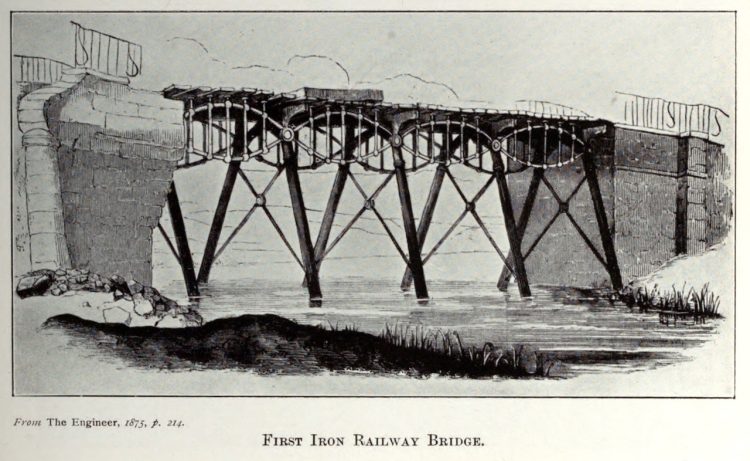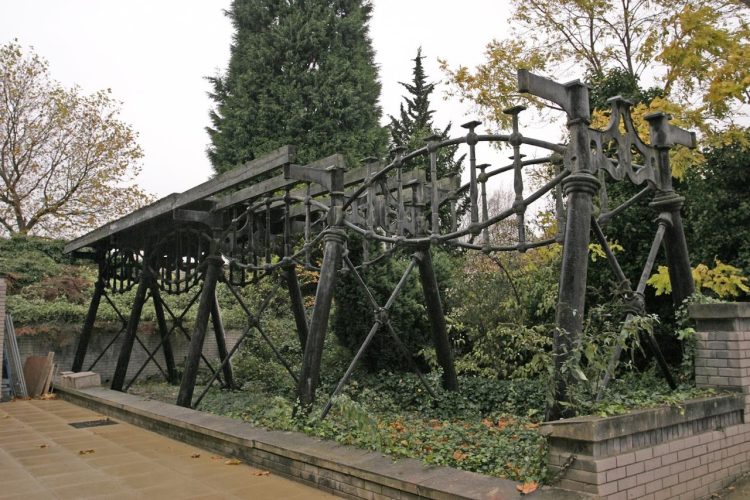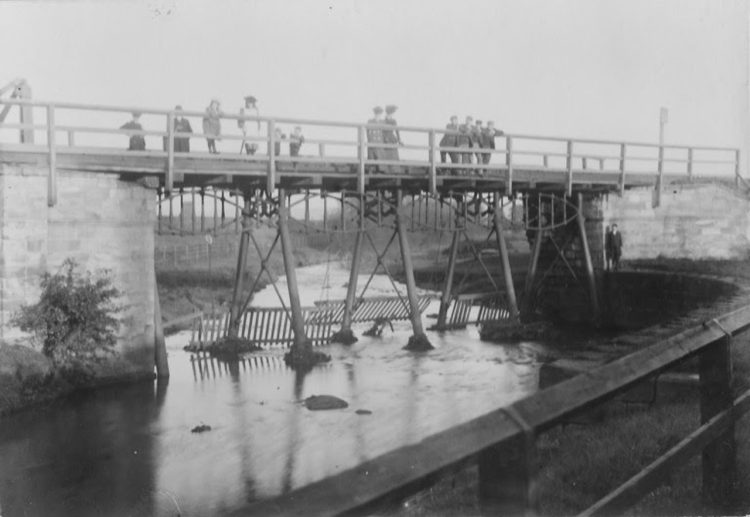The remains of the world’s first railway bridge built of iron, which was completed in 1823, is to be repaired and revitalised thanks to a grant of £161,000 from Historic England to Durham County Council.
Gaunless Bridge spanned the River Gaunless at West Auckland in County Durham and was designed by the ‘father of the railways’ George Stephenson. It formed part of a line serving the Witton Park Colliery and originally carried horse-drawn coal wagons until they were replaced by steam locomotives around 1833.

The bridge remained in use until 1901 when it could no longer bear the weight of the increasingly heavy coal wagons. When it was demolished it was not completely dismantled, as the stone abutments supporting the structure were left in place and are now part of the Stockton and Darlington Railway Scheduled Monument. However, their condition has been affected in recent years because of anti-social behaviour.
Some of the ironwork that formed the structure is on permanent display at the National Railway Museum in York.

The Historic England grant will be used to repair the abutments so that they can support a new bridge deck, which will form part of a new 26-mile Stockton and Darlington Railway Walking and Cycling route. As well as carrying out the repair work, Historic England will involve the local community by running sessions about the history of the bridge with local schoolchildren and creating a volunteer group dedicated to the long-term care of the site.
The project forms part of the Stockton and Darlington Railway Heritage Action Zone. That is a five-year project that aims to rejuvenate and restore the 26-mile stretch of the historic railway and help to achieve its potential of becoming a major heritage attraction and visitor destination in the build-up to the railway’s bicentenary in 2025.

Giles Proctor from Historic England said: “We are really pleased to be funding this restoration project through the Stockton and Darlington Railway Heritage Action Zone. Gaunless Bridge has a significant role in the history of the railway and the repair of its abutments mark the first step in securing the bridge’s legacy as a part of the new Walking and Cycling Route.”
Cllr Elizabeth Scott, Durham County Council’s Cabinet member for economy and partnerships, said: “As the world’s first iron railway bridge, Gaunless Bridge is a key part of our rail heritage, both at a local and national level.
“We’re really pleased therefore that this funding is allowing us to restore and repair the abutments, helping preserve this important site.”






Responses
Excellent article, well done!
* the new Walking and Cycling Route *
A facility which should have been provided decades ago
(and properly maintained as well).
Let’s hope for plentiful and sensible access points too.
Would be good if the replacement bridge was made as a replica of the of the original but don’t suppose that will happen as the would say it will cost too much.
seeing the undergrowth on the original at the museum its a shame it cannot be restored and put back in its original position as it looks in not to bad a state for a footbridge to be formed and will add to the originality and final aim of opening the full route as a heritage site